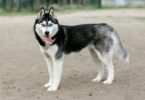Over 1.2 million posts on TikTok feature a playful, low-slung canine with silky fur and expressive eyes. This surge in popularity isn’t accidental—dachshunds, particularly the long-haired variety, have become social media royalty. Take Oli, a charismatic “wiener dog” with 850K followers, whose antics showcase the breed’s humor and loyalty.
Originally bred in Germany for badger hunting, these compact dogs now thrive as family companions. Their elongated bodies and short legs hide surprising athleticism, while their affectionate nature makes them ideal for apartment living. Modern enthusiasts appreciate their adaptability, whether chasing toys or lounging on laps.
This guide explores everything from their 17th-century origins to contemporary grooming strategies. You’ll discover how to maintain that signature fluffy coat and address common health concerns. We’ll also decode their spirited personalities and share tips for finding reputable breeders.
Whether you’re drawn to standard or miniature versions, understanding their needs ensures a happy partnership. By the end, you’ll know how to keep your dachshund thriving—both physically and socially—in today’s fast-paced world.
Introduction to the Allure of Fluffy Wiener Dogs
Scrolling through feeds reveals a curious trend: miniature comedians with feathery tails stealing hearts worldwide. Long-haired dachshunds dominate platforms like TikTok and Instagram, where their antics rack up millions of views. This digital fame stems from their irresistible mix of charm and quirkiness.
Captivating Social Media Moments
Stars like Lucy, a golden-haired pup, became viral sensations by “singing” along to piano tunes. Murphy, another fluffy dachshund, gained fame for his dramatic reaction to bath time. These clips highlight their expressive faces and comedic timing—traits that make content instantly shareable.
Hashtags like #SausageDogSaturday and #DoxieLife showcase their global fanbase. Followers aren’t just laughing at the jokes—they’re connecting with the breed’s spirited personality. Behind every viral video lies a loyal companion with surprising intelligence.
What Sets Them Apart
Unlike many small breeds, long-haired dachshunds combine elegance with fearless energy. Their silky coats catch the light during play, while their determination shines during backyard adventures. Potential owners often notice how these pups balance regal poise with goofy mischief.
Their bond with families fuels engaging content. A dachshund’s head tilt or tail wag often reflects genuine emotions, creating relatable moments. This authenticity—paired with their striking appearance—explains why they’ve become more than pets, but internet icons.
History and Background of Dachshund Breeds
In 17th-century Germany, a unique breed emerged to tackle a dangerous predator underground. Developed specifically for badger hunting, early dachshunds combined compact frames with relentless determination. Their name translates to “badger dog,” reflecting their original purpose in flushing out burrow-dwelling prey.
Origins in German Badger Hunting
Breeders prioritized traits like elongated bodies and powerful legs for digging. These hunting dogs needed courage to face sharp-clawed opponents in tight spaces. Historical records show nobles prized them for their efficiency—one dachshund could do the work of three terriers.
By the 1800s, selective breeding refined their scenting abilities. The American Kennel Club recognized the breed in 1885, cementing their status beyond working roles. Their tenacity remains evident in modern dachshunds during play or problem-solving.
Evolution Into Miniature and Long-Haired Varieties
Demand grew for smaller versions to hunt rabbits and foxes. Miniature dachshunds appeared in the late 19th century, standing under 11 inches tall. Breeders also developed three coat types—smooth, wirehaired, and long-haired—to suit different climates.
The silky “fluffy” variety gained popularity through royal European owners. Today’s long-haired dachshunds inherit water-resistant undercoats from spaniel crossbreeding centuries ago. This diversity means owners can choose companions matching their lifestyle while preserving the breed’s bold spirit.
Understanding this history helps explain their need for mental challenges. Interactive toys mimic burrow exploration, honoring their roots as determined hunters. Proper care honors a legacy spanning over 300 years.
Physical Appearance and Grooming Essentials for Fluffy Weiner Dog
Dachshund coats range from sleek to shaggy, each requiring tailored care. Three distinct varieties exist: smooth, long-haired, and wirehaired. Smooth dachshunds sport glossy fur that needs minimal brushing. Wirehaired types feature dense, rough outer layers with softer undercoats. The long-haired dachshund stands out with flowing locks along the ears, chest, and tail.
Understanding Different Coat Types
Each coat type demands specific tools. Slicker brushes work best for long-haired varieties to prevent tangles. Grooming rakes efficiently remove loose undercoat in wirehaired pups. Smooth coats benefit from rubber curry brushes to distribute natural oils. Seasonal shedding often requires more frequent sessions.
Managing Spay Coat and Daily Care
Neutering can trigger hormonal changes, leading to a “spay coat”—thicker, woolier hair replacing silky strands. Professional groomers recommend hand-stripping to maintain texture or high-velocity blowouts to manage excess undercoat. Daily brushing prevents mats, especially behind ears and between leg folds.
Outdoor adventures often leave coats picking up debris. A quick post-walk wipe-down with a damp cloth reduces dirt accumulation. Detangling sprays help maintain shine between baths. For comprehensive care strategies, consult this complete care guide covering all coat variations.
Consistent grooming routines adapt as coats change with age or health shifts. Weekly checks for skin irritations or parasites keep problems at bay. Proper maintenance ensures these low-slung companions stay comfortable and camera-ready year-round.
Health Considerations and Common Concerns for Dachshunds
Dachshunds’ elongated spines make them prone to specific medical challenges. Their unique anatomy requires owners to adopt proactive care strategies. Regular vet visits and lifestyle adjustments help manage risks effectively.
Back Injuries and Intervertebral Disc Disease
Intervertebral disc disease (IVDD) affects 25% of dachshunds, according to veterinary studies. This condition occurs when spinal discs bulge or rupture, causing pain or paralysis. Early signs include reluctance to jump, arched backs, or dragging hind legs. Immediate veterinary care improves recovery chances.
Preventive measures reduce risk back injuries. Use ramps for furniture access instead of jumping. Harnesses—not neck collars—protect the neck during walks. Maintain lean body weight through portion control and low-impact exercises like swimming.
Other Health Issues: Joint, Eye, and Weight Management
Luxating patella—a dislocating kneecap—commonly impacts small breeds. Watch for sudden limping or “skipping” steps during walks. Orthopedic beds and joint supplements support mobility.
Obesity strains their delicate spines. Measure meals and limit treats to 10% of daily calories. Annual eye exams catch cataracts early, especially in senior pets. Brushing teeth weekly prevents periodontal disease linked to heart issues.
Track behavior changes like reduced playfulness or appetite shifts. These often signal underlying health issues needing attention. Consistent care routines help these spirited companions thrive for 12-16 years.
Behavior, Training, and Daily Care Practices
Dachshunds bring a unique blend of determination and charm to daily life. Their spirited personalities demand thoughtful engagement strategies. While fiercely loyal, these compact companions often test boundaries with playful mischief.
Temperament and Social Interaction
These small dogs thrive on curiosity-driven exploration. Owners frequently describe them as “big personalities in tiny packages”—independent thinkers who still crave affection. Early socialization helps counter their natural wariness of strangers. Introduce new people gradually using treats during meetups.
Structured playdates build confidence. Puzzle toys channel their hunting instincts productively. Avoid overwhelming environments until they master basic commands. Their stubborn streak often surfaces during training, requiring patience and consistency.
Effective Training Tips and Mental Stimulation
1. Use high-value rewards like chicken bits for obedience drills. Short sessions (5-10 minutes) work best.
2. Rotate scent games every day—hide treats under cups or in snuffle mats.
3. Establish fixed meal times and walk schedules to reinforce routine.
Prevent boredom by varying activities. Agility courses adapt well indoors using cushions and tunnels. Monitor for behavioral changes like sudden disinterest—these may signal health issues. Always support their back during handling to avoid strain.
Consistency transforms challenges into bonding opportunities. With creativity and structure, dachshunds become enthusiastic partners in daily adventures.
Tips for Adopting and Living with a Dachshund
Bringing home a dachshund requires thoughtful preparation. These spirited companions need environments tailored to their unique physique and energy. Whether adopting puppies or adult dogs, creating a safe space prevents injuries and supports their adventurous nature.
Essential Home Adjustments
Install pet stairs near beds and couches to protect their long backs. Avoid letting them jump—research shows 68% of spinal injuries occur from furniture-related accidents. Secure loose wires and small objects they might chew.
Consider age when adopting. Puppies need puppy-proofed zones with chew toys, while older dogs may require orthopedic beds. Adult dachshunds often adapt faster but still need daily mental stimulation.
Outdoor areas must be debris-free to prevent coat tangles. Check yards for sharp rocks or toxic plants. Use harnesses instead of collars during walks to reduce neck strain.
Choose breeders who health-test parents for IVDD and provide vaccination records. Rescue groups often assess temperament, helping match dogs to your lifestyle. Remember—these pups thrive in homes ready for 12-16 years of companionship.
Understanding their hunting instincts prevents escapes. Reinforce fencing and use microchip gates. With proper setup, you’ll create a haven where your dachshund’s personality shines safely.
Wrapping It Up: Embracing the Joy of Your Fluffy Weiner Dog
From badger-hunting roots to modern-day companionship, dachshunds have charmed households for centuries. Their journey from German forests to living room couches reflects adaptability matched by few breeds. Whether sporting sleek or flowing coats, these spirited pups thrive when owners honor their unique needs.
Regular grooming preserves that signature silky fur, while mindful exercise protects their iconic physique. Staying alert to spinal health and weight management helps prevent common issues. A balanced routine blending playtime, mental challenges, and vet checkups ensures vibrant companionship for 12-16 years.
Prospective owners should embrace both the breed’s mischievous spark and maintenance requirements. The dapple variety exemplifies their diverse coat patterns, each demanding tailored care. Patience during training sessions pays off with a loyal partner who keeps households laughing.
Every long-haired dachshund carries centuries of history in their wagging tail. By understanding their quirks and needs, you’ll forge an unbreakable bond. These small but mighty companions prove great things truly do come in long, fluffy packages.
FAQ
Are long-haired dachshunds hypoallergenic?
No dachshund variety is hypoallergenic. Their silky coats shed seasonally and may trap allergens like dander. Regular brushing helps minimize loose hair and debris around your home.
How often should I groom a long-haired dachshund?
Plan for weekly brushing to prevent mats, with professional trims every 8–12 weeks. Pay extra attention to feathering on ears, legs, and tails where tangles commonly form.
What exercises are safe for dachshunds to prevent back injuries?
Avoid high-impact activities like jumping. Use ramps for furniture access and prioritize leash walks over rough play. Swimming provides low-stress muscle strengthening.










Leave a Comment